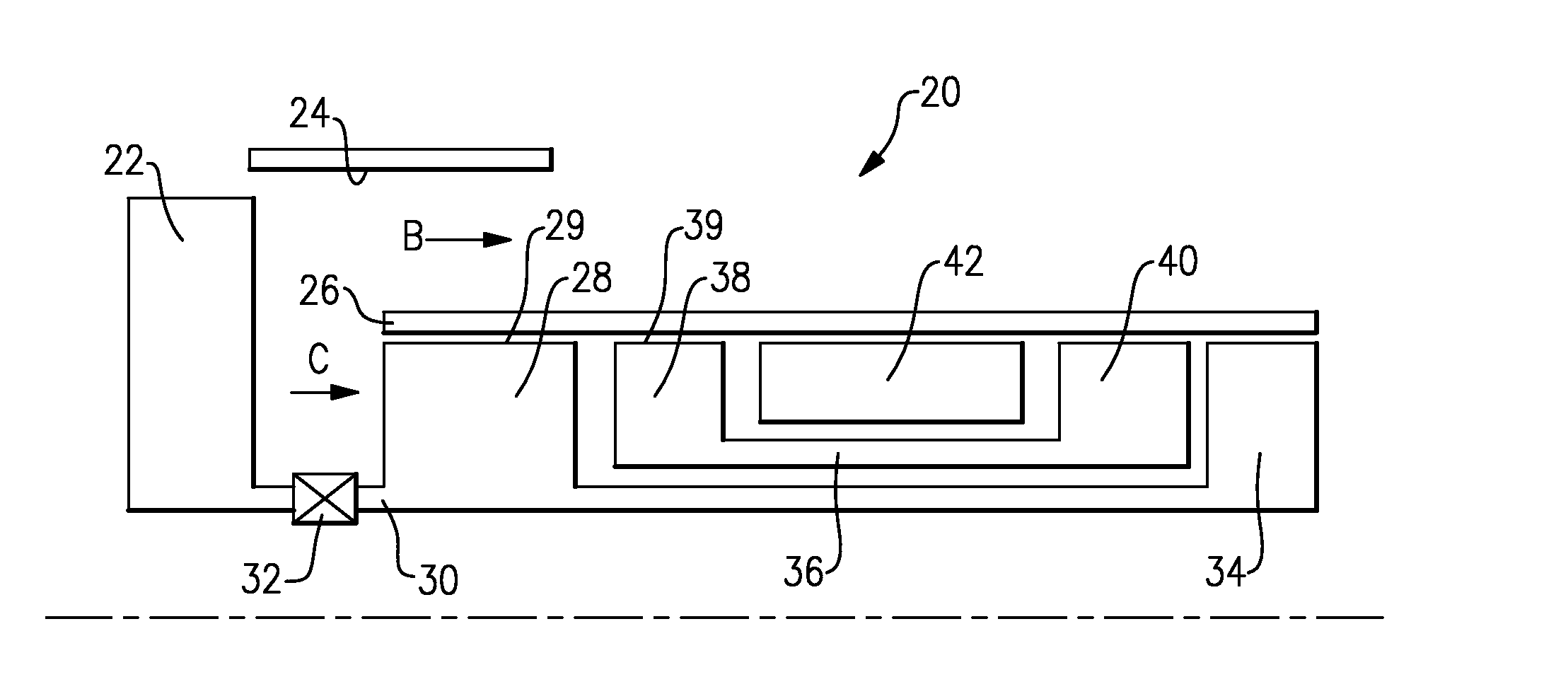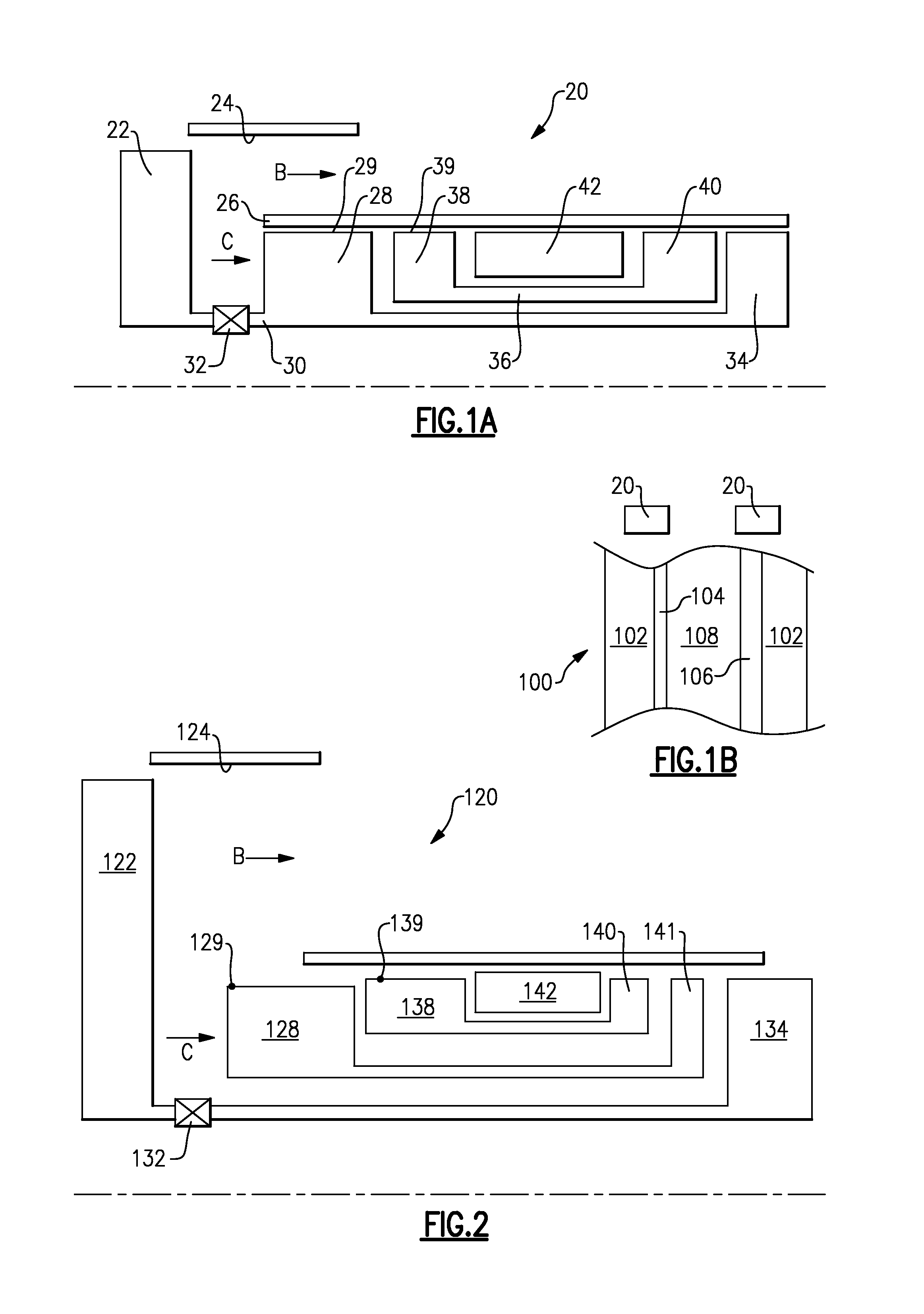Gas Turbine Engine for Long Range Aircraft
- Summary
- Abstract
- Description
- Claims
- Application Information
AI Technical Summary
Benefits of technology
Problems solved by technology
Method used
Image
Examples
Embodiment Construction
[0033]A gas turbine engine 20 shown schematically in FIG. 1A, is designed for use on long range aircraft.
[0034]As known, a fan rotor 22 delivers bypass air B within a nacelle 24. A core engine housing 26 receives core air flow C from the fan rotor 22. The core air flow C initially reaches an upstream compressor rotor 28, which compresses the air to a first lower level and then delivers that air into a downstream compressor rotor 38, where additional compression occurs.
[0035]The air from the compressor rotor 38 is delivered into a combustion section 42, mixed with fuel and ignited. Products of this combustion pass downstream over an upstream turbine rotor 40, which operates at a higher pressure and speed and drives a shaft 36 to drive the downstream compressor rotor 38. Downstream of the turbine rotor 40, the products of combustion drive a fan drive turbine 34 which is a downstream turbine rotor and operates at a lower pressure and speed than does the turbine rotor 40. The fan drive ...
PUM
 Login to View More
Login to View More Abstract
Description
Claims
Application Information
 Login to View More
Login to View More - R&D
- Intellectual Property
- Life Sciences
- Materials
- Tech Scout
- Unparalleled Data Quality
- Higher Quality Content
- 60% Fewer Hallucinations
Browse by: Latest US Patents, China's latest patents, Technical Efficacy Thesaurus, Application Domain, Technology Topic, Popular Technical Reports.
© 2025 PatSnap. All rights reserved.Legal|Privacy policy|Modern Slavery Act Transparency Statement|Sitemap|About US| Contact US: help@patsnap.com


